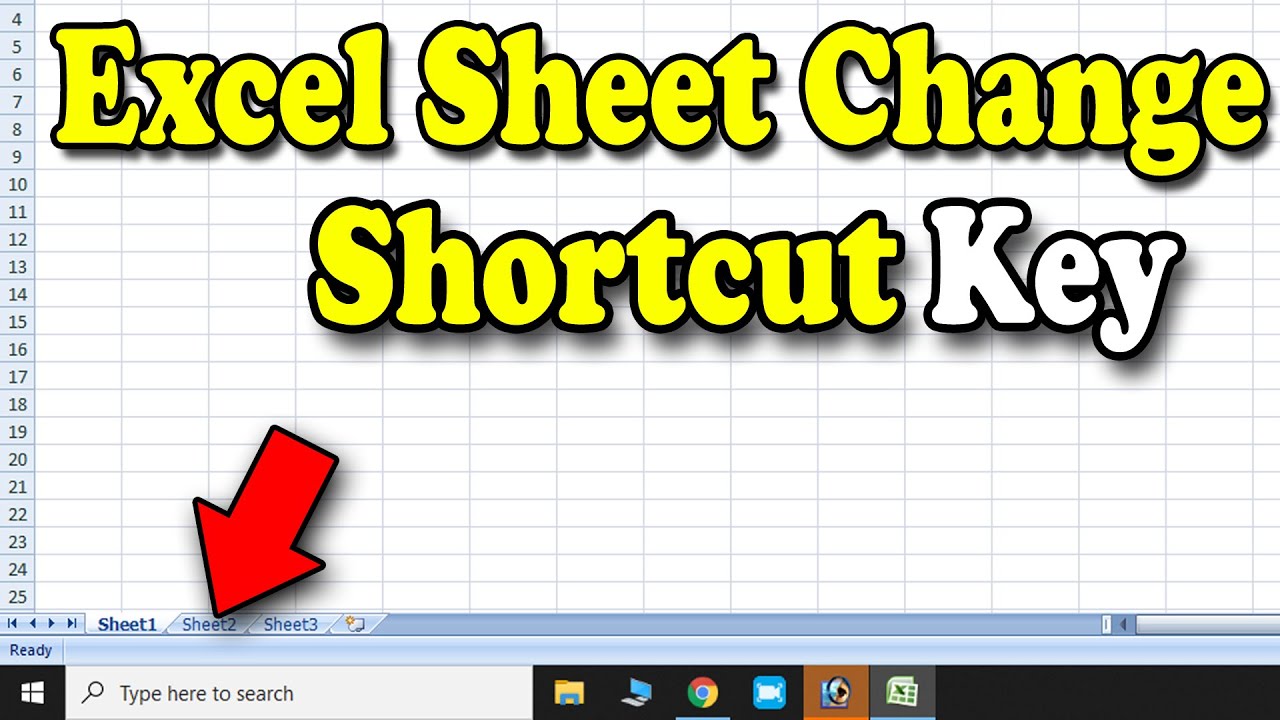Switch Excel Sheets Swiftly with Keyboard Shortcuts

Mastering the Art of Switching Excel Sheets with Keyboard Shortcuts

Microsoft Excel, a pivotal tool for data analysis, becomes even more powerful when users harness its keyboard shortcuts. Among these, the ability to swiftly switch between sheets stands out for enhancing productivity. This blog post guides you through the essential shortcuts and techniques to navigate your Excel workbook seamlessly.
The Need for Speed in Excel Navigation

Switching between Excel sheets efficiently can save time, reduce physical strain, and streamline workflow. Whether you're handling complex financial models, managing project timelines, or organizing inventory sheets, knowing how to navigate quickly is key to maximizing efficiency.
Excel Sheets Keyboard Shortcuts: The Basics

Before diving into the specifics, let's outline the basic keyboard shortcuts for moving through Excel sheets:
- Ctrl + Page Down: Move to the next sheet to the right.
- Ctrl + Page Up: Move to the previous sheet to the left.
🔧 Note: Remember these shortcuts work within the current workbook.
Pro Tips for Seamless Navigation

Using Named Sheets for Quick Jumps

Excel allows you to name your sheets, which can be beneficial for navigation:
- Right-click on the sheet tab you want to rename.
- Choose 'Rename' from the context menu.
- Type in a descriptive name and press Enter.
Now, to jump to a named sheet:
- Press Alt + H to open the Home tab.
- Type in the first few letters of the sheet name followed by Tab to autocomplete.
- Hit Enter to select the sheet.
Multi-Workbook Mastery

Navigating between different workbooks requires a different set of shortcuts:
- Ctrl + Tab: Switch to the next workbook.
- Ctrl + Shift + Tab: Switch to the previous workbook.
Customizing Shortcuts for Individual Sheets

You can assign custom keyboard shortcuts to Excel sheets:
- Press Alt + F8 to open the Macro dialog.
- Create a new macro or use an existing one that jumps to the desired sheet.
- Assign a shortcut to the macro by editing the macro properties and selecting a key combination.
Troubleshooting Navigation Issues

Here are some common issues when navigating Excel sheets and how to address them:
- "Keyboard shortcuts are not working." Ensure you are in the correct environment, Excel is up to date, and no conflicting software is running.
- "I have too many sheets to manage." Use the grouping and color-coding features to organize sheets better.
- "I lost track of the active sheet." Utilize the scrollbar to visually locate the active sheet or use the 'Next Sheet' and 'Previous Sheet' buttons.
Conclusion

Navigating Excel sheets with keyboard shortcuts is an essential skill for maximizing productivity and efficiency. From using basic shortcuts for moving between sheets to customizing macros for quick jumps, the tools are at your fingertips. Remember that practice is key, so take the time to integrate these shortcuts into your daily workflow. With these techniques, you'll be able to manage even the most complex workbooks with ease, allowing you to focus on the data analysis rather than getting lost in navigation.
What if my shortcut keys are already assigned to other functions?

+
If your desired shortcut keys are already assigned, you can either:
- Look for alternative, less used shortcuts.
- Reset the conflicting shortcut in Excel’s customization menu.
- Create a macro with an unobtrusive shortcut.
Can I customize the shortcuts for moving between sheets?

+
While Excel doesn’t allow direct customization of the default sheet navigation shortcuts, you can:
- Create macros to navigate sheets and assign shortcuts to those macros.
- Use VBA to create custom navigation buttons or menu items.
Is there a limit to how many sheets I can switch between using shortcuts?

+
There is no limit to how many sheets you can switch between, but performance might slow down with large workbooks. Remember:
- Navigation shortcuts only work within the workbook in view.
- Custom macros can help organize and manage large numbers of sheets.



